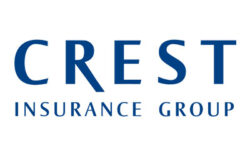During the COVID-19 pandemic, and with restrictions on in-person dining, you might expect a reduction in lawsuits alleging accessibility barriers under Title III of the Americans with Disabilities Act (ADA). While that may be true in relation to physical access barriers, it has not been the case with respect to virtual access barriers. Indeed, the number of demand letters and lawsuits challenging accessibility features of restaurants’ websites and online ordering platforms have been increasing exponentially.
Every restaurant should ask itself this question: is my business accessible to customers with disabilities in compliance with the ADA and any local laws? In answering this question, most restaurant owners immediately think about that ramp that was just installed, the accessible bathrooms that were just remodeled, and count the number of handicap parking spaces in the parking lot. Some owners may proudly answer this question with a confident “yes,” having had an ADA accessibility survey conducted at their restaurant. However, most do not think about whether or not their website is accessible. Beware: you can have a fully accessible restaurant with no physical access barriers and still be the subject of the next “virtual” Title III lawsuit!
Businesses have been forced to deal with “drive-by” lawsuits under Title III for some time. These lawsuits typically involve a prospective plaintiff, or their counsel, simply driving down the street noting any businesses with technical ADA violations (i.e. inaccessible entrances) and filing suit without warning. Recently, a growing number of cases have paved the way for a new type of Title III lawsuit – the “virtual” or “surf-by” lawsuit – where a plaintiff, or their counsel, simply needs to visit a company’s website, regardless of whether any sales are conducted on the site. Most of these “surf-by” lawsuits are brought by plaintiffs who are visually impaired and rely upon screen reading software or other computer access technologies to read and access websites. If a prospective Title III plaintiff’s (or their attorney’s) particular technology is not compatible with your website or portions of your website, they will assert that a violation exists and you may be the target of the next “virtual” Title III lawsuit.
Businesses have attempted to defend these lawsuits on the basis that Title III only applies to physical “brick-and-mortar” locations. In other words, a website is not a place of public accommodation protected under the ADA. Unfortunately, the Federal Circuit Courts addressing this issue are split as to whether websites are required to be accessible. Some Circuit Courts have concluded that websites may be public accommodations covered by Title III and must be accessible. On the other hand, other Circuit Courts have concluded that places of public accommodation must be physical “brick-and-mortar” locations. As such, businesses with a purely online presence would not be covered by Title III in significant portions of the country.
However, if you have a “brick and mortar” location, regardless of the jurisdiction where your restaurant is located, your website will more likely than not need to be accessible. This is because of a recent trend where courts are side-stepping the issue of whether a website is a public accommodation covered by Title III by holding businesses liable if their website offers services having a sufficient nexus to their physical restaurants. For example, courts have found that websites offering coupons, restaurant locator services, and online ordering with in-store pickup must be accessible. The more touch points your website has to your restaurant, the more likely it will be covered.
If your website is found to be covered by the ADA, frequent issues raised by plaintiff’s attorneys involve improperly labeled images, functions, and “dead” links. Visually impaired customers often rely upon assistive technologies, such as screen readers to access and navigate websites. Without sufficient descriptions of functions and images encoded in the website, visually impaired customers would have difficulty navigating the website using these assistive technologies. Other issues involve, among other things, redundant links, unnecessary coding that interferes with screen reader technologies, and missing page heading tags.
Additionally, even if your website is fully-accessible, a restaurant may still face liability for any the inaccessibility third-party plug-ins or links on your website. A growing trend among plaintiffs’ attorneys is to sue (or threaten to sue) restaurants for inaccessibility issues on third-party delivery services directly linked on a restaurant’s website. These “remote” lawsuits have been exponentially increasing over the past few years as plaintiffs’ attorneys look for ways to expand the scope of Title III. The COVID-19 pandemic and accompanying restrictions on restaurant occupancy have only furthered the trend.
One approach to deterring and preventing such lawsuits is to consult with legal counsel or a website consultant to identify the existence of any issues with your company’s website as to the use of assistive technologies, for example, and prepare and implement an appropriate remediation plan. While the Department of Justice (“DOJ”) has not yet set forth any requirements or regulations for website accessibility, courts, the DOJ, and plaintiffs’ attorneys have looked to the Web Content Accessibility Guidelines (WCAG) published by the World Wide Web Consortium (W3C), for guidance.
But, conducting an accessibility review of your website and correcting any issues that are uncovered may not be enough to prevent these “virtual” lawsuits. The difficulty with these claims is that websites change and are updated constantly. This prevents businesses from quickly mooting ADA Title III website claims. Typically, a defendant in an ADA Title III lawsuit can get a case dismissed by voluntarily remedying the alleged accessibility features. For example, if lawsuit complains that the width of a door is too narrow, a restaurant can quickly resolve the Title III claim by installing a wider door. This is not necessarily the case with a website. The reason is that with the installation of a new door, courts are not concerned that the barrier (the smaller door) will re-appear. However, because websites change constantly, some courts have held that a one-time fix does not necessary prevent the barrier from re-occurring.
Because of these unique features of websites, a comprehensive and ongoing approach is required. Recent Department of Justice settlement agreements have provided significant guidance as to the best practices restaurants should adopt in relation to website accessibility. These practices include:
- Conforming website and any mobile applications, and software platform with the Web Content Accessibility Guidelines (“WCAG”) 2.0 AA, published by the World Wide Web Consortium;
- Developing a Website Accessibility Policy and distributing this policy to content providers and website content and technical support personnel for the company, mobile applications, and platform;
- Linking to this policy from the website homepage, soliciting and providing a method to submit feedback, and providing a method to contact knowledgeable company personnel;
- Developing and distributing Accessibility Best Practices Guidance for content providers;
- Appointing a website accessibility coordinator who is knowledgeable on website accessibility and digital accessibility standards, responsible for coordinating company’s responsibilities with respect to accessibility, and responsible for developing the Accessibility Best Practices Guidance;
- Modifying policies to prioritize accessibility bug fixes to ensure they are remedied with the same level of priority as any other equivalent loss of function for individuals without disabilities;
- Retaining one or more knowledgeable website accessibility consultants responsible for conducting annual website accessibility evaluations of the website, mobile applications, and platform; and
- Providing annual training to website content and technical support personnel on ensuring the website, mobile applications, and platform conform with WCAG 2.0 AA.
As has always been the case, taking appropriate preventive measures is the best defense against Title III lawsuits.
Written by: Todd Fredrickson, Steve A. Miller and Scott C. Fanning, Fisher & Phillips LLP
To contact Fisher & Phillips, please email info@corestaurant.org and let us know you’d like an email introduction.












